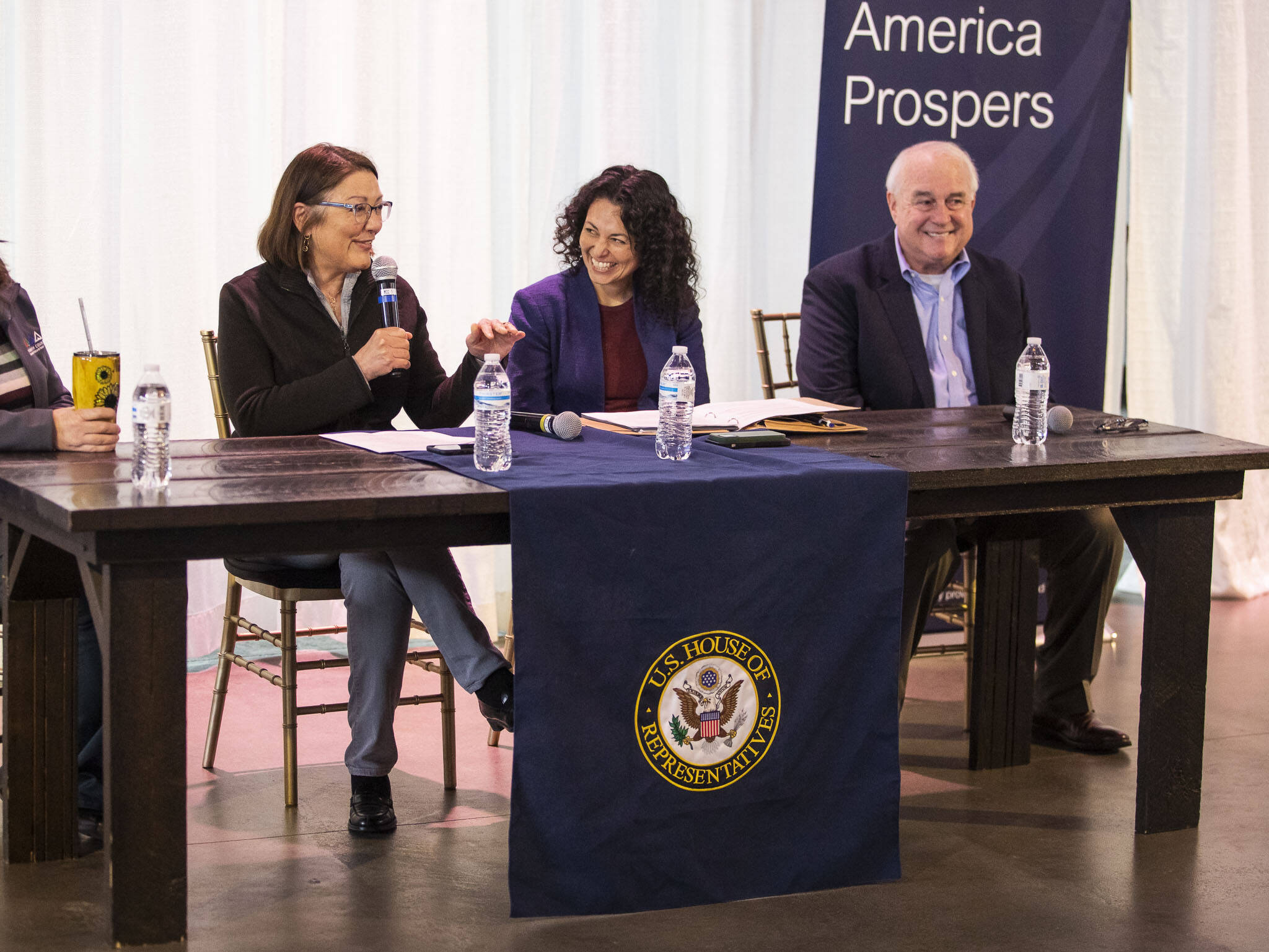SNOHOMISH — What does a rural community look like?
In Nebraska, it can be out in the middle of nowhere. In Western Washington, it might be within a few miles of a big city.
Lawmakers, particularly those at the federal level, can struggle with the definition of rural.
One cure is to hit the road and take a look.
Xochitl Torres Small, undersecretary for rural development with the U.S. Department of Agriculture, did just that this week, stopping at Thomas Family Farms in Snohomish to hear from local farmers and get the lay of the land.
She was joined by Democratic U.S. Rep. Suzan DelBene, Snohomish County Agriculture Coordinator Linda Neunzig and Derek Sandison, director of the state Department of Agriculture.
There to listen and voice their concerns at the one-hour event was a small audience of local dairy farmers, cattle and sheep producers and growers.
Agriculture is 12 percent of Washington’s overall economy. The state is home to 35,000 farms of which 95% are family-owned.
In Snohomish County, agriculture is the top industry by volume, second only to aerospace. Local farming is based around specialty crops, such as fruits, vegetables, herbs, Christmas trees and flowers, rather than commodities like corn and soybeans. The county’s farmers generate about $157 million a year in annual sales.
Saving, growing and keeping family farms viable so they can prosper and be passed to the next generation is paramount, Torres Small said.
Torres Small was nominated by President Joe Biden earlier this month to serve as deputy secretary of the USDA. She awaits confirmation by the House and Senate.
The Farm Bill, a big federal legislative package that comes up every five years, is on the docket this year. The current bill expires in 2023 and is being renewed.
The legislation, first enacted during the Great Depression, has three primary aims: ensure an adequate food supply, keep food prices fair for consumers and farmers, and protect and sustain the country’s natural resources. Its protection and coverages range from crop insurance to ensuring that low-income families have access to healthy food.
The Farm Bill is critical to farmers across the state, who depend on its programs to insure their crops and secure grants or low-interest loans.
Andy Werkhoven, a local dairy farmer, welcomed the panel and Torres Small’s promise to look into simplifying USDA application forms, but also voiced grave concerns over a Federal Emergency Management Agency mandate that has kept him from modernizing his dairy operation.
The FEMA ruling, known as Zero Rise Analysis, requires that any project in a floodway be reviewed to determine if it will increase flood heights. An engineering analysis is required before a permit can be issued.
Werkhoven told the panel that the high cost associated with the analysis and permit process has kept him from installing a permanent underground pipe to whisk away manure from his dairy cows. Instead, he plans to make do and install a more vulnerable above-ground pipe.
“The rules are designed so that theoretically you can do nothing to raise the flood level,” Werkhoven said. “You cannot put a post in the ground legally because it raises the water.”
“FEMA, an agency that is there to help us, protect us, creates rules that are hard for us to live with,” he added.
While the FEMA rule is critical, there should be some flexibility around smaller projects, including fish conservation projects, said Linda Lyshall, executive director of the Snohomish Conservation District.
Farmers weren’t the only folks who attended the listening session.
Eric Fritch, owner of Fritch Forest Products in Snohomish, asked authorities to confer with the U.S. Forest Service about speeding up the permit process to salvage trees burned by wildfires.
“Every dead tree we can process is a live tree we don’t have to cut,” Fritch told the panel.
“Only the outside of a tree is burned. You can still use the inside,” said Neunzig, the Snohomish County agriculture coordinator.
There’s a limited time window to harvest those trees and the Forest Service permit process tends to move very slowly, Neunzig said. Harvesting the burned trees also remove deadfall that can fuel other fires.
Torres Small called the Snohomish visit a vital stop on her tour, which continues this week.
Farmers, mill owners and conservationists agreed.
“At the end of the day, we need elected officials to help us solve our problems and not point fingers at each other about why they can’t be solved,” Werkhoven said.
Janice Podsada: 425-339-3097; jpodsada@heraldnet.com;
Talk to us
> Give us your news tips.
> Send us a letter to the editor.
> More Herald contact information.

























